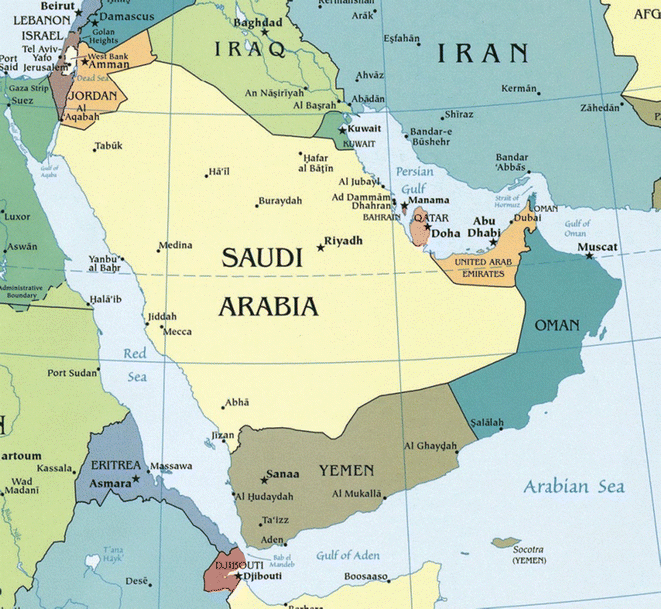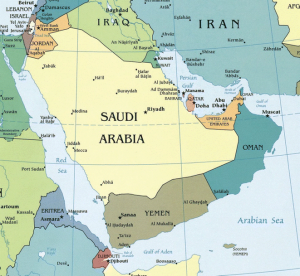Discover how Middle Eastern ports are reshaping the competition for Persian Gulf transshipment. Explore cutting-edge strategies, real-world cases, and future challenges in this expert maritime guide.
Why the Persian Gulf’s Transshipment Market Matters
The Persian Gulf is not just a body of water between the Arabian Peninsula and Iran—it is a critical maritime artery in global shipping. Roughly 30% of the world’s seaborne crude oil passes through the Strait of Hormuz, making ports in this region essential nodes in global trade logistics. But while the Gulf is famous for oil exports, it is rapidly becoming a fierce battleground for transshipment traffic—the movement of containers from one vessel to another at an intermediate port before reaching their final destination.
As containerized trade continues to grow between Asia, Europe, and Africa, Persian Gulf ports have become strategic hubs for redistributing cargo within the Middle East, Central Asia, and even East Africa. Leading ports like Jebel Ali (UAE), Hamad (Qatar), Dammam and King Abdullah (Saudi Arabia), and Sohar (Oman) are investing billions to lure carriers with deeper berths, automation, and tax incentives.
For maritime professionals, port authorities, logistics companies, and seafarers, understanding how these ports compete is no longer optional—it’s critical.
Infrastructure Race: How Gulf Ports Are Upgrading for Scale
Jebel Ali Port, UAE: The Giant Among Giants
Operated by DP World, Jebel Ali is the undisputed heavyweight in the Gulf. With over 19 million TEU (twenty-foot equivalent unit) capacity annually, it ranks among the top 10 container ports globally (DP World, 2024). Its competitive edge lies in:
-
Automation: Integration of digital twin technology and AI-driven yard management.
-
Connectivity: Linked to the Dubai Logistics Corridor, Jebel Ali offers direct access to Al Maktoum International Airport and the Jebel Ali Free Zone.
-
Incentives: Foreign companies benefit from 100% ownership and tax exemptions.
Yet, Jebel Ali’s dominance is being challenged by emerging regional rivals.
Hamad Port, Qatar: The Challenger with State Support
Hamad Port, inaugurated in 2017, represents Qatar’s strategic decoupling from land-based supply chains via Saudi Arabia. Built for a capacity of 7.5 million TEU, it’s part of Qatar National Vision 2030 and has:
-
One of the deepest natural harbors in the region (17m draft).
-
Green port credentials, using solar power and electric RTGs (rubber-tired gantry cranes).
-
Direct Asia-East Africa-Black Sea connections, reducing dependency on Jebel Ali.
Since the blockade ended in 2021, Hamad Port has aggressively expanded services to India and Turkey, offering alternate transshipment routes bypassing the UAE.
King Abdullah Port, Saudi Arabia: A Private Sector Disruptor
Built and operated by the private sector, King Abdullah Port (KAP) at the Red Sea entrance is rapidly gaining traction due to its:
-
Proximity to Suez Canal routes.
-
Fully automated terminals capable of handling ultra-large container vessels (ULCVs).
-
2024 milestone of handling over 4 million TEUs, a 15% YoY growth (KAP Annual Report, 2025).
Saudi Arabia’s Vision 2030 aims to position the Kingdom as a global logistics hub, with KAP playing a central role.
Regional Strategy: How Geopolitics and Trade Shape Competition
While infrastructure is essential, geopolitical positioning and trade alliances shape who leads in transshipment:
Iran’s Port Dilemma: Strategically Located, Politically Important
Iran’s Bandar Abbas port enjoys a prime location near the Strait of Hormuz and could serve as a gateway to Central Asia. However, international sanctions, unreliable insurance coverage, and limited investment restrict its competitiveness. According to UNCTAD’s Review of Maritime Transport 2023, Iranian ports handle less than 1% of global transshipment volumes despite vast potential.
That said, China’s Belt and Road Initiative (BRI) is quietly investing in Chabahar and Bandar-e-Anzali, potentially creating a backdoor corridor linking India to Central Asia.
Oman’s Dual Advantage: Political Neutrality and Location
Sohar and Salalah ports in Oman have gained respect for their neutrality during regional disputes. Salalah is closer to East African and Indian ports, giving it a niche in southbound transshipment. According to the Journal of Marine Science and Engineering (2024), Salalah’s year-on-year cargo volume has risen by 12% due to:
-
Maersk and MSC’s increased frequency of calls.
-
Stable regulatory environment and multi-modal inland links.
-
Access to free trade agreements via GCC and COMESA.
Technology as a Competitive Edge
Smart Port Strategies in the Gulf
Gulf ports are increasingly embracing automation and digitization to attract shipping lines. Highlights include:
-
DP World’s Dubai Trade Platform: Integrates customs, port, and terminal data, reducing clearance time by 60% (Thetius, 2023).
-
Blockchain Pilot Projects in Sohar and King Abdulaziz Ports: Streamline documentation and real-time tracking.
-
5G-enabled IoT at Hamad Port: Enables predictive maintenance and drone-based cargo surveillance.
As per a 2025 report by Clarksons Research, ports offering digital platforms for cargo tracking and real-time analytics are 40% more likely to retain major shipping lines.
Case Studies: Port Rivalries and Transshipment Impact
Jebel Ali vs. Hamad: The Post-Blockade Realignment
Before 2017, Qatar relied heavily on UAE ports, especially Jebel Ali. The 2017–2021 blockade forced Doha to build direct links with Turkey, Iran, and Oman. Hamad Port now manages over 80% of Qatar’s maritime trade.
Interestingly, this reshuffling led to Jebel Ali’s container traffic stagnating in 2019–2020, while Hamad’s surged. Today, both ports have recovered, but the competition has reshaped shipping routes across the Gulf.
Salalah’s Rise During the Red Sea Crisis
Following disruptions in the Red Sea due to attacks on merchant shipping in 2023–2024, Salalah became a transshipment pivot, especially for cargo rerouted from Suez-bound vessels. According to Lloyd’s List Intelligence, Salalah handled over 3.8 million TEUs in 2024, up from 3.1 million in 2022.
Challenges Facing Gulf Transshipment Ports
Navigating Overcapacity and Redundancy
A 2023 report by Maritime Economics and Logistics found that total Gulf port capacity exceeds 70 million TEU, yet utilization averages only 58%. Overlapping investments risk port redundancy—a problem seen in some Chinese and Indian coastal ports as well.
Environmental Regulations and Carbon Targets
As IMO pushes for decarbonization, ports must adapt. The IMO’s revised GHG Strategy (2023) calls for net-zero emissions from shipping by 2050. Ports that cannot provide green bunkering options (like LNG or future e-fuels) may lose vessel calls. The UAE and Oman are investing in shore power (cold ironing), but progress is uneven across the Gulf.
Future Outlook: Who Will Lead the Next Decade?
Middle Eastern ports in the Persian Gulf will continue evolving from oil-exporting terminals to diversified logistics hubs. Based on current trends:
-
Jebel Ali will remain dominant, but only if it adapts to environmental and digital demands.
-
Hamad Port is poised to lead in regional transshipment, especially with Turkey and Central Asia.
-
Omani ports may dominate Indian Ocean feeder services, especially in east–west trade.
-
Saudi ports like King Abdullah and Dammam could challenge the UAE’s stronghold with sustained private-sector efficiency and state-backed investments.
A more connected, digitized, and green regional port ecosystem is emerging—one that could redefine how goods flow through the heart of Eurasian trade corridors.
Frequently Asked Questions (FAQ)
Why is transshipment important in the Persian Gulf?
It allows large container vessels to offload goods at hub ports, which are then redistributed via feeder vessels to smaller ports in the region or inland destinations.
Which is the largest transshipment port in the Gulf?
Jebel Ali Port in Dubai is currently the largest and most advanced, with an annual capacity exceeding 19 million TEUs.
Are Gulf ports ready for IMO decarbonization targets?
Some are—Hamad Port and Jebel Ali have introduced electric handling equipment and green energy pilots. But many still lack cold ironing and alternative fuel bunkering infrastructure.
How do geopolitics affect port competition?
Disputes like the 2017 Qatar blockade or Red Sea tensions shift shipping routes and alliances, directly impacting which ports gain or lose traffic.
Is Oman a neutral player in Gulf port competition?
Yes. Oman’s neutral foreign policy has helped its ports remain operational during regional disputes, making Salalah and Sohar reliable transshipment options.
What role does technology play in port competitiveness?
Smart ports with digital platforms, AI logistics, and automated equipment offer faster turnaround, attracting carriers looking to reduce delays and operational costs.
Are Gulf ports overbuilt?
There is concern about overcapacity, with some ports underutilized. Strategic coordination and niche specialization may be required to avoid inefficiencies.
Conclusion
The Persian Gulf is undergoing a maritime transformation. No longer defined only by oil exports, its ports are now at the center of a global transshipment chessboard. With mega infrastructure, digital innovation, and geopolitical recalibration, ports like Jebel Ali, Hamad, Sohar, and King Abdullah are reshaping the future of trade in this vital region.
For shippers, operators, and students of maritime affairs, the Gulf’s port race is more than a regional contest—it is a blueprint of how competition, innovation, and strategy intersect in the global maritime economy.
Stay informed, stay adaptive—because the tide in the Persian Gulf is shifting fast.
References
-
Journal of Marine Science and Engineering, 2024. Special Issue on Gulf Ports.
-
Maritime Economics and Logistics, 2023. “Port Capacity and Utilization in the Middle East.”


